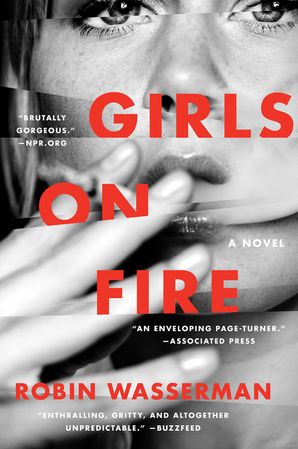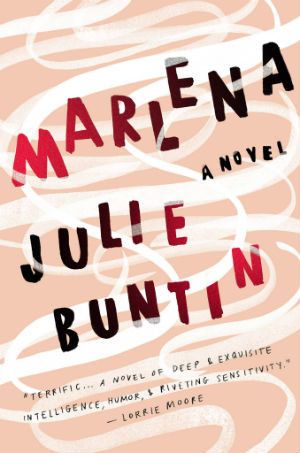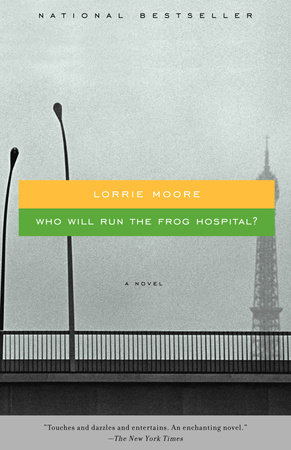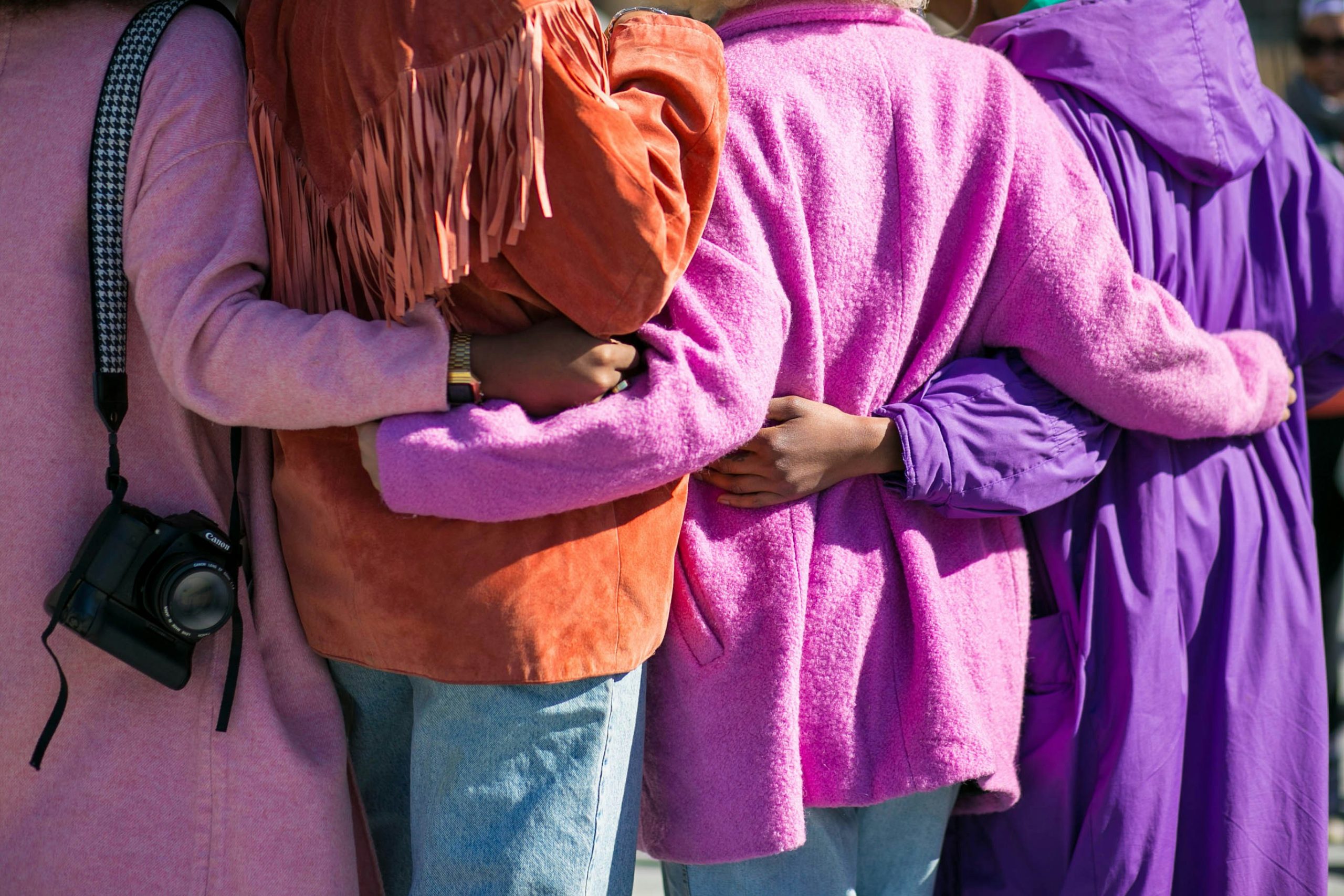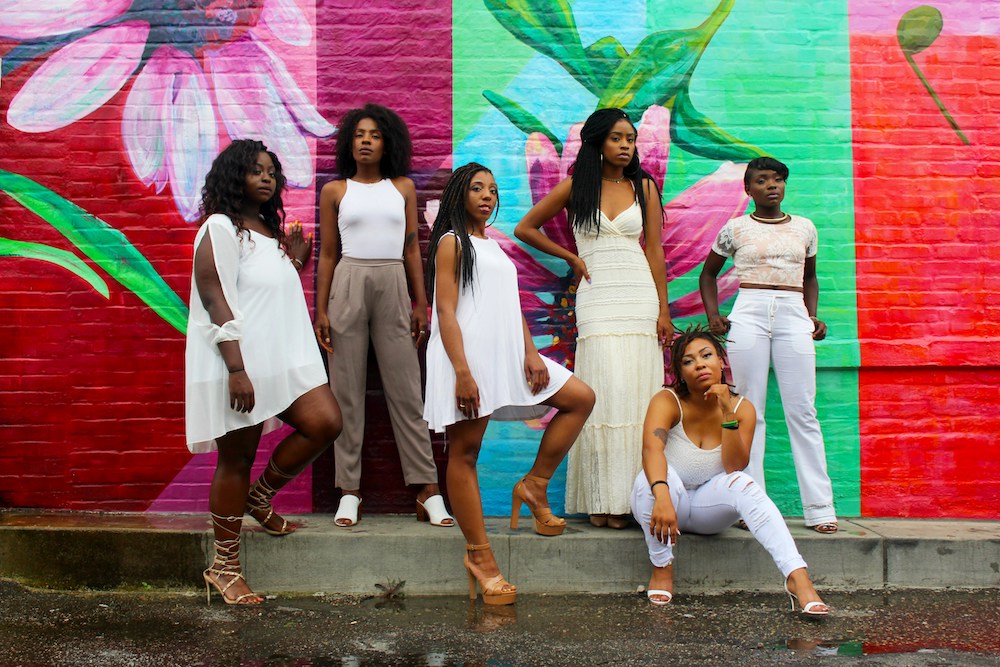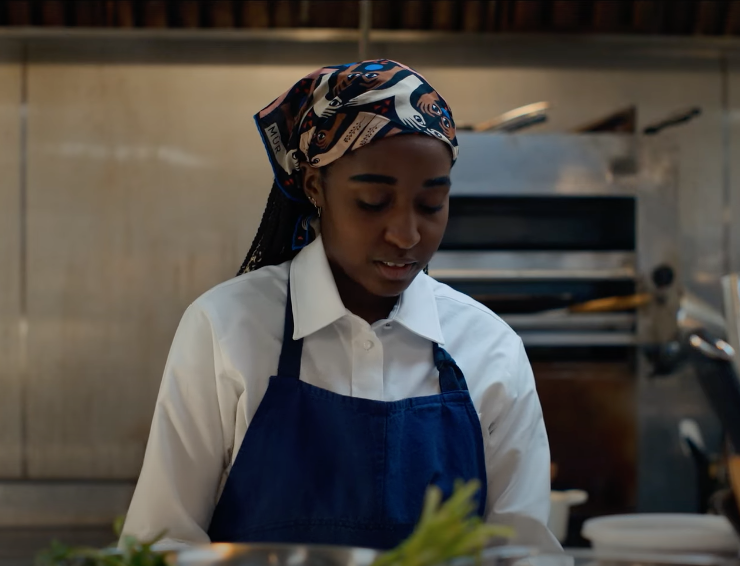Books & Culture
Why Are Friendships Between Teen Girls So Radioactive?
In life and literature, adolescent friendships are bright, dangerous, and quick to decay

Give in: Pick a pair of them, lost in each other, a matched set like a vision out of the past. Nobody special, two nobodies. Except that together, they’re radioactive: together, they glow.
Robin Wasserman, Girls on Fire
I spent high school, college, and most of my early adulthood single and fiercely attached to a series of best friends. This term — “best friend” — feels juvenile. The superlative “best” seems a little too insistent, ignorant of the way friendships ebb and flow. But these friendships really were marked by an overt, exclusive devotion. After my daughter was born two and a half years ago, I felt my then-best friend pull away, and along with sadness, loneliness, embarrassment, I also felt a sharp pang of wistfulness: a sense that I’d likely never fall hard into an intense friendship like that again.
When I was younger it was exhilarating to fully reveal myself, unflinching, to a new friend. I wonder if it still would be, if not for the fact that in a nearly identical way I already feel vulnerable and exposed. I have a two-year old daughter and an infant son. There are emotional and physical parallels between early motherhood and intimate friendship. I’ve been thrown up on by my college roommate, and, more recently, my children. I am sometimes awake all night comforting someone I love. I can never be out of contact.
After my daughter was born, I felt my best friend pull away, and along with with sadness, loneliness, embarrassment, I also felt a sharp pang of wistfulness: a sense that I’d never fall into an intense friendship like that again.
The past few years seem to have brought an increase in fiction about intense adolescent friendships between girls. Last summer, I gorged on Robin Wasserman’s Girls on Fire, reading it so quickly that I felt dizzy by the time I finished. The novel’s ending is violent, gruesome, grotesque, but it was the friendship at the novel’s core rather than the plot that enthralled me. The specifics of the story are surreal: Lacey and Nikki are keeping the secret of their accidental murder of a popular jock in the middle of a drunken threesome. It is a different friendship, Lacey and Hannah’s, that Wasserman is describing when she entreats us to imagine a radioactive pair of girls. The novel is as much about the intense loyalty a friendship like that inspires as it is about the murder.
Like Girls on Fire, Julie Buntin’s debut novel Marlena centers on another intense, isolating, all-consuming, radioactive teenage friendship. After Cat’s parents divorce, she moves with her mom and brother to rural northern Michigan. At first she’s infatuated with Marlena, the beautiful, hurt, slightly frightening girl who lives next door; by the time school starts, they are a glowing pair. The novel’s structure alternates between chapters in New York, where Cat is a married adult woman, and chapters in Michigan where Cat and Marlena are high schoolers.
I had only just begun Marlena, already feeling a little giddy with self-absorbed recognition, when I read in an interview that Buntin cited Lorrie Moore’s Who Will Run the Frog Hospital as one of the books that made her want to be a writer. Of course! I finished Moore’s novel about Berie and Sils, two best friends who work at a fairy tale-themed amusement park in Horsehearts, New York on a cold March night. I remember feeling so overwhelmed with inarticulable emotion that I ran, dressed in jeans and a sweater, from my college apartment to campus. I felt the melodrama of my behavior even as I was living it, but I also felt compelled to respond somehow to the novel. I climbed a fire escape and sat there looking over campus wondering what the word was for the thing I was feeling. For years, I remembered my visceral reaction more than the novel itself.
I climbed a fire escape and sat there looking over campus wondering what the word was for the thing I was feeling. For years, I remembered my visceral reaction more than the novel itself.
When I taught Hawthorne to 11th graders, we spent a lot of time talking about Carl Jung’s theory of archetypes. It was a satisfying counter to the way in which more literal-minded students, skeptical of all the analysis that accompanied our reading, often claimed the figurative layers of the story were something invented by English teachers. I used Jung as a means of saying: look, there really is something universal, whether Hawthorne did it on purpose or not (though in the case of Hawthorne — of course he did!) in the places, colors, characters in the stories we read.
Jung’s shadow archetype was hardest to explain. It made perfect sense, yet articulating its meaning was always just outside my grasp. The darkness inside each of us, I remember trying to explain. The part of us all that would go into the forest with Young Goodman Brown. And part of growing up is meeting and ultimately acknowledging that shadow.
The late scenes of Girls on Fire and Marlena both occur in a damp, shadowy, late-autumn woods haunted by literal death that signals the end of girlhood. Following this death, in a lyrical summary that evokes Berie and Sils’s fairy tales of Storyland, Wasserman writes:
Once upon a time there was a girl who loved the woods, the cool sweep of browning greens, the canopy of leafy sky. Hidden in the trees, she picked flowers and dug for worms, she recited poems, timing the words to the bounce of her feet in the dirt. In the woods she met a monster, and mistook her for a friend. Into the woods, they went deeper and darker, and carved a sacred ring around a secret place, where the monster dug out pieces of the girl and buried them in the ground so that the girl could never truly leave, and never bear to return…it was her fate, to live under the rotting bark and the molding stones that she could escape, but always, somehow, the woods would claim her.
In the woods of sexuality, secrecy, fear, childhood ends. These two forests — the site of Marlena’s death and the site of the murder in Girls on Fire — might as well be the same place. A place familiar as the scene of evil in childhood fairytales, a place inhabited by a Jungian shadow. Though Sils is not dead, her remaining in Horsehearts long after Storyland has closed makes the once-enchanted landscape feel bleak with gothic decay. Although she’s unhappily married and has never known a friendship like that again, Berie has left, traveled and now reminisces from a distance like Cat, thinking constantly of Marlena from her new life in Manhattan.
In the woods of sexuality, secrecy, fear, childhood ends. These two forests — the site of Marlena’s death and the site of the murder in Girls on Fire — might as well be the same place.
It wasn’t until I read Marlena that I remembered a short story I wrote about ten years ago. It was a first-person story about a pair of high school best friends. Like Marlena, the best friend in my story drowned. I had her ambiguously-but-not-really drive herself into a reservoir based on the real-life one my best friend and I used to drive around on humid summer nights. Even at the time, I knew it was almost inevitably maudlin to end a short story with a character’s suicide, and — of course — everyone in the class said as much. My professor told an anecdote about a writer who said you get three suicides or murders in your writing career and must use them wisely. I remember thinking, “well, sure, I’m twenty-four and this story is not that great, but these characters are one hundred percent worthy of one of those three.”
In my real life, leaving a radioactive friendship, and with it our confessions, secrets, and the feeling of those swampy, autumn forest days always came as a relief. Is there a way, in literature at least, to depict the end of an intense friendship that doesn’t involve brackish water and a stagnant small town life for one friend, while the other comes of age in a brightly-lit elsewhere, still never quite apart from the forest, never able to forget what it showed inside of her? Intimate friendships, particularly between young women, don’t seem to require murder or opioid addiction or menacing fathers to take on a dark, haunted quality, after they end.
Is there a way to depict the end of an intense friendship that doesn’t involve brackish water and a stagnant small town life for one friend, while the other comes of age in a brightly-lit elsewhere?
The term half-life refers to how long it takes for half of a radioactive isotope’s unstable atoms to decay. How long after a friendship does a body retain the glow? I’ve been wondering what the half-life of a radioactive friendship might be.
I realize now that the night I finished Who Will Run the Frog Hospital I was feeling the inevitability of such loss with an anticipatory nostalgia, and at the same time feeling comforted by the suggestion of those radioactive traces always, even if faintly, lighting up some part of me. The friendships that had been fiercely formative — not sexual, but hardly casual or simple — in my own life, were nowhere to be seen in common representations of adulthood (and I think now I see that they really are not part of adulthood in the same way they are in adolescence). But their influence might remain.
This was as much terrifying as it was a comfort. Berie and Sils, though such different adults, unable to even fully address how intimately they know one another, are still marked by the summer in which they were inseparable. And, even as adults, are tied together by numbing loneliness they cannot articulate.
When I re-read Frog Hospital last year, I was taken aback to find that it wasn’t the novel I’d remembered at all. In my mind it was a story of an intense teenage friendship, but there’s much more from the adult-Berie’s point of view than I remembered. She’s in a miserable marriage. The friendship certainly is the novel’s central relationship, but there is a fully realized plot; adult Berie’s husband and teenage Sils’s boyfriend are developed characters. Berie is fired from her job at Storyland for stealing money to pay for Sils’s abortion, a fact that had totally receded behind the memory of that sharp Chicago air and anticipation of isolation that seemed inevitable in my coming life as an adult. I’d remembered the adult sections as a frame for a coming-of-age narrative, but, as with Marlena, they are half the story itself!
As an adult, I’m struck by how much being half of a glowing pair of girls was was about feeling partnered and as a result, validated. Having someone who’d be in it with you. In the hating of phonies, in the obsessing over cross country race times, in the obsessive crush on a history teacher, in the toxic fear of weighing more than a hundred pounds, in the desperation to escape suburban Connecticut, in the realization that the greatest danger on your college campus was in the basements of fraternity row, in the lonely, fumbling years of figuring out what to wear to job interviews and how much to drink at work parties. That kind of friendship was about really being known. My parents knew and loved me, but these friendships were thrilling in the way intimacy offered the validation of being known and loved by someone who didn’t share my genetic material.
As an adult, I’m struck by how much being half of a glowing pair of girls was was about feeling partnered and as a result, validated.
My family moved to Switzerland when I was six, and it was there that I met my first best friend. We were best friends by default: two of only a handful of American kids, her parents knew mine, we had siblings the same age. We spent afternoons exploring the attic of my family’s rental house with a gothic curiosity. We put on plays for our families and spoke English at lunch-time and celebrated American Thanksgiving and told ghost stories and ate her mom’s tiramisu.
Remembering this friendship carefully for the first time in years, I’m tempted to cast it in an entirely wholesome light. The last best friendship that was not charged with the burgeoning sexuality, the intimacy of secrets adolescent and teenage girls share. But then I remembered the dark winter afternoon when we used a fork to pluck a piece of poop from the upstairs toilet and examine it closely. I can still see the cutlery pattern. I was disgusted, thrilled, nervous about what we’d done and threw the fork away to be sure no one might eat with it. An eight year old’s darkness, sure, but the fecal metaphor seems too important to ignore. Perhaps as a principle of balance, with the notion of a “best” friend, some darkness is inevitable.
Perhaps as some principle of balance, with the notion of a “best” friend, some darkness is inevitable.
As a senior in high school, I worked hard to craft the seemingly-effortless write-up that would go under my yearbook photo (favorite quote: Franny Glass saying “I’m sick to God of just liking people. I wish I could meet somebody I could respect”). To my best friend of that autumn, I’d written: “the fire was lit on the night you were born.” Crafting these yearbook messages to friends, boyfriends, parents, even favorite teachers was an important ritual at my high school. The fire line I used was from a car ad my friend and I had seen while we flipped through running magazines wondering if any of the professional runners got their periods.
Even at the time, I knew the message sounded romantic and suggested a sexual intimacy, but I didn’t care. My friend had said she loved the line, and I understood being her best friend meant remembering this. Not just that night, but for the months until I wrote the words that would go under my senior picture and proclaiming it publicly in the same way I was required to decorate her locker on her birthday or accompany her to a party we knew would be broken up before midnight.
I didn’t have a boyfriend until the summer after I graduated from college. I filled my middle, high school, and college years with female friendships so intense it was easy to mistake us for a couple. In an essay she wrote for The Atlantic, Buntin describes a Marlena-like friend of her own: “At 16, I was in love with her in a not-entirely platonic way, which every woman who has been the sidekick in a teenage girl-duo will completely understand.”
I filled my middle, high school, and college years with female friendships so intense it was easy to mistake us for a couple.
In my teenage girl-duos, we shared twin beds and talked all night and confessed fears and desires so intimate that speaking them aloud sometimes made me dizzy. Some of these revelations feel callow now, but they were existential then. Would we ever fall in love with someone who loved us back? Would we always feel suffocated by the girls we were expected to be? Would we ever stop hating our bodies? Would sex hurt? Would we have jobs that we loved, or were even good at? It was such a relief to feel revealed, vulnerable and still understood. Loved even.
We learned to drive together and drained gallons of $.89 gasoline on Connecticut’s back roads. We watched Lifetime eating disorder specials, dubbed from TV on VHS, together in silent awe. We went kayaking in the Long Island Sound and capsized when the water was forty degrees. We poured glue in the mailbox of our menacing, misogynistic history teacher. We ran miles and miles in the freezing rain and only then let ourselves binge on Chinese takeout, warm, cozy, clean in our team sweats, curled up together wondering what everything yet to come would be like. We called each other in the middle of the night and risked waking up the whole house — in the days before cell phones — when our boss was creepy at the work party or when we wanted to be sure the other wasn’t mad or we were afraid that the girl who drank too much at the party really might die, just like we learned in health class.
We met at the diner before school, arming ourselves for the day ahead, gathering intel from the night before. We walked each other home from parties, as we’d been instructed to do during college orientation and concocted elaborate plans to get chemistry TAs to ask us on dates. We walked down the street holding hands, laughing in the language we’d made up just to speak to one another. We told each other we could be writers, lawyers, doctors, evolutionary biologists and that we deserved better than the TA, and anyway, he once dismissively called biology a “soft science.”
Until, abruptly, it was too much. Until the twin beds felt too small, the smell of spoiled milk (it’s easier to purge if the last thing you’ve eaten is dairy), or stale beer, or dirty sheets, or clammy hands too much to bear. I felt suddenly suffocated to be known so intimately. It was never with any grace that I pulled away. I sat at a different lunch table, revealed secrets I knew I shouldn’t, pulled my hand free, stayed home with my parents the night everyone got home for Thanksgiving break, stopped answering the phone.
I felt suddenly suffocated to be known so intimately. It was never with any grace that I pulled away.
I write about these friends all together not because they were interchangeable, but because the way it felt to be known, accepted, and loved by someone outside my family was what made me glow. That liminal time between adolescence and young adulthood was itself so unstable that it seems in retrospect that of course friendships that intense would have been radioactive. I think even then I knew that it would be impossible to have more than one such friend at a time. More than one person who would call you in the middle of the night when you’d had your first kiss, or your boss drank too much and passed out in a bathroom, or could reasonably expect to hold your hand in public. There are other friends I’ve been close with and shared adventures with, but the specific kind of intense friendship that feels like a not-quite-decent secret is the kind that seems to have a half-life.
Friendships formed more temperately, in the daylight hours, over years of shared interests or proximity, have more often been capable of evolving gracefully. Without the intensity of commitment to one another’s darkest elements, these other friendships have been more resilient and longer-lasting. I think now of my closest friends and realize that the inconvenient geography of adulthood in the suburbs, exhaustion of work commitments, demands of parenting, have forced a slowed pace — maybe we can meet for dinner once every other month, or maybe we can squeeze in a few adult sentences between pushes on the swing — that seem to have also lent a stability.
Friendships formed more temperately, in the daylight hours, over years of shared interests or proximity, have more often been capable of evolving gracefully.
I wonder if Claire will end up being the last radioactive best friend I made and lost. I imagine the way she shaped the adult I became, the half-life of that influence long, her mark on me fading slowly as I age.
We met as young high school English teachers nine years ago. It’s not exactly that the dissolution of our friendship has been too emotionally fraught to imagine being open to true, vulnerable friendship again, but that I realize how much of the vulnerability and intensity feels incompatible with the emotional demands of my adult life: marriage, motherhood, the geography of suburban living combine to make the kind of intense bonding I once took for granted feel as much a relic of a different life as math tests and school lunches.
I realize how much of the vulnerability and intensity feels incompatible with the emotional demands of my adult life: marriage, motherhood, the geography of suburban living.
The day Claire and I became friends was one of those first bright, sunny warm days at the tail end of a long Connecticut winter. We were running around the track after coaching high school distance runners when I confessed a crush on one of our teaching colleagues. By the time we’d circled the track, we’d hatched a plan to turn our next English department happy hour into a date, and by the lap after that we were laughing too hard to breathe, careening in and out of lanes, as the kids who were still waiting for rides after practice watched us with a mix of amusement and discomfort.
As soon as I walked in the door of my apartment, I called Claire to tell her something I’d thought of on the drive home. That weekend she taught me how to put on eyeshadow and two weeks later we drove to the Outer Banks for a weeklong vacation with my college friends. Unbothered by gridlock on the Cross Bronx Expressway, a closed lane on the New Jersey Turnpike, a wrong turn in Maryland, we talked nonstop through the entire ten hour drive.
When I became friends with Claire, I’d just moved back to Connecticut, a place I’d hated as a teenager. I’d broken up with a boyfriend I once thought I would marry, and I was, for the first time in several years, really afraid I’d spend the rest of my life eating Trader Joe’s frozen pizzas alone in my apartment. At one point, I thought my radioactive best friendships were the shameful mark of not having had a boyfriend at an age when most girls had, as though the friendships themselves were evidence of a certain kind of unlovability. I see it a little bit differently now.
It’s true that I would likely would not have found myself giggling hysterically over putting battered University of Chicago tote bags on the purse stool at a five-star Chicago restaurant with my college roommate if I’d had a boyfriend. Those late night conversations around that reservoir, barrelling east on I-80, running down the rocky Connecticut beach, early mornings curled toward a friend, talking ourselves toward sleepy oblivion might never have been. Those were the nights, conversations, moments that made me. I spent these drives and runs and nights talking about what I feared, loved, longed for, desired most. Allowing myself to be known, shadow and all. This kind of connection was really what I desired, often in an animal, primal way. This kind of longing felt more pure than the longing I had for a romantic relationship. That second desire always felt tinged with validation, with being explainable to my students, my parents’ friends, marking myself as worthy in some societally agreed-upon sense.
This kind of connection was really what I desired, often in an animal, primal way. This kind of longing felt more pure than the longing I had for a romantic relationship.
I have some friends who, though they were happy to be settling into marriage, mourned the end of their single lives. That there would be no more first dates, one night stands, initial flirtations. I hated dating, and though and for me those early dating days were always more anxiety and uncertainty than euphoria. I do understand some of the wistful nostalgia for the rush of early infatuation, though. On days when I haven’t laughed or slept enough, when I feel isolated and muted by adulthood, I long for the adrenaline rush that comes with falling in love. I’ve always fallen in love with friends differently than with men. More confidently, more wholly, more intimately.
By the time I recognized that my friendship with Claire had ended, she was already too far away to fight with or resent. I wonder sometimes if her pulling away from me is karma for the friendships I’ve felt a sudden urge to escape. I have a lot of questions about how and why I might have been too much. Did I become like someone we’d have once rolled our eyes at? Did I talk too much about my kids? Too clingy? Not funny enough? Did I say something rude? Fall short when she needed support I didn’t understand? Had I simply become too much?
For years, I’ve been thinking about how different the end of a friendship is than the end of a relationship. The most obvious difference is that there’s not typically a concrete “break up” in a friendship. But, it’s not just that. Both the beginning and end of my best-friendships were different than dating. It never mattered to me as much that my boyfriend know me as that he love me, respect me, want some bigger, more abstract similar things out of life. Maybe for that reason, the end of a romantic relationship never felt sudden, but was instead a slow realization of incompatibility that became arguments and frustrations and then eventually required a conversation and returning of belongings. And, maybe most differently of all, the end of a romance comes with a socially-condoned mourning period.
Both the beginning and end of my best-friendships were different than dating. It never mattered to me as much that my boyfriend know me as that he love me, respect me, want some bigger, more abstract similar things out of life.
In Who Will Run the Frog Hospital, when Berie’s marriage is on the brink of dissolution over her husband’s affair, it is Sils and that summer of intense connection that Berie thinks of. Sitting in Paris with her cruel, aloof husband, adult Berie remembers:
I was invaded by Sils, who lives now in my vanished girlhood, a place to return to at night, in a fat sleep, during which she is there, standing long-armed and balanced on stones in the swamp stream, stones in the cemetery, stones in the gravelly road out back…”
Marlena and Frog Hospital are both novels split between the past — the narrator’s adolescence and period of intense friendship — and the present. Cat’s adult life in New York is haunted by Marlena, by unresolved questions about her death, of course, but also by the ways in which the woman Cat became was shaped by the friendship they shared, briefly, years ago.
I think about apologizing to my own ghosts. For no longer being entirely the person that I was when we became friends. For sending them into reservoirs. For writing the story about them to begin with. For pulling my hand away that bright June afternoon in Chicago. For moving lunch tables in tenth grade, and at the time, not feeling even a little bit sorry about it.
Although I know ego — being the half of the duo left behind rather than the half who does the leaving — is part of what’s made it hard to find closure in the end of my friendship with Claire, I also suspect it’s the feeling I won’t ever fall in friendship love again that has made it hard to move on. I’ve read so much about the ways mothering small children can make women feel “touched out” by the end of the day, and as a result the ways that physical intimacy must be renegotiated after parenthood. Certainly the intimacy of breastfeeding and diaper changing make can other kinds of physical intimacy unappealing. Our cat rubbed against me while I was writing this essay and I nearly screamed.
Certainly the intimacy of breastfeeding and diaper changing make can other kinds of physical intimacy unappealing. Our cat rubbed against me while I was writing this essay and I nearly screamed.
In the same vein, the emotional intensity of parenting does not leave a lot of room for intimate friendships. Parenting the way I hope to, or even adequately, is already so much that there’s no room for too much. I am already confronted with my shadow all the time. The specter of death that rises fully realized during labor, the craving for sleep even as I wake with a worried start at the baby’s cries, the inability to ever be fully present when I’m not in the same physical space as my children, the constant awareness of how long it’s been since I nursed or pumped, of how much breast milk is in the fridge, how much each child has been held, nuzzled, shown the fierce, unconditional nature of my love. A constant balance of how I can do better for them and by them. To step away from this kind of physical and emotional intensity for the kind of all-consuming friendship I once knew is unfathomable. But, still, motherhood and friendship do not occupy the same emotional space, and I sometimes miss the rush of becoming known, loved, validated by a new friend.
After my second baby was born, women brought dinner. Not Claire — other mothers. Many of these women I’d never spent time with one-on-one. I hadn’t met their husbands, I didn’t know where they’d grown up, who they’d been in the lifetime before they became mothers. Although we didn’t push the topic beyond the societal norms that go along with asking a woman how her labor went, I knew they knew about the darkest, most intimate moments of my life. They knew how scared I was during labor, how much pain I was in, how near I felt to death — either my own or my baby’s — they knew how deliriously tired I was, how filled with irrational outrage over small injustices, how panic-stricken over sudden infant death syndrome, hemorrhage, drunk drivers, nuclear apocalypse I was. Though, if we did talk about any of this, it was slowly, in spurts when toddlers weren’t listening. Friendships unfolding over months, years, not manic-all-night conversations.
If we did talk about any of this, it was slowly, in spurts when toddlers weren’t listening. Friendships unfolding over months, years, not manic-all-night conversations.
I sometimes wept with gratitude for the chicken pot pie on my doorstep on a dark January Thursday evening. For acknowledgement of the out-of-body exhaustion, euphoria, and fear that mark the first weeks home with a new baby. Last week at the indoor playground, my infant strapped in a carrier, my daughter climbing up and down the jungle gym, my new friend Stefanie and I exchanged sentences between hugs and toddler reassurance. We were together at the playground for maybe forty minutes, quickly skimming the surface of things we’d built up to tell each other. Beneath each snippet of conversation we managed, was an unspoken hour of raw honesty. The forty minutes were restorative. Although — or maybe because — this unarticulated understanding is not radioactive.
The term “radioactive” is not used to describe a stable person or a sustainable friendship. As I was googling “radioactive tracers,” my browser suggested “how long does it take for radioactive tracers to leave the body.” They light us up as they course through our veins, maybe revealing illness. And we want that glow to fade out. A brief half-life.
Sometimes, especially just around the time I was realizing Claire didn’t want to be my friend anymore, I would tell my husband that I was lonely. Once he said, dismayed, “but I’m right here.” And, truly, he is. But, he’s not a woman, not a mother, and we are a team in an inextricable, permanent, consequential way that none of my friends and I ever have been. The stakes can feel terrifyingly high — no room for instability in this home that houses our children. Our work together is largely about turning inward. Power-washing the house and scheduling dentist appointments and eating dinner on the back patio and waiting until after our children are in bed to worry about Trump or ISIS or catastrophic floods.
That I feel we’re in it together is consistent with those radioactive friendships, but what we’re in is so different, so much more about us and less about me. Although I once might have, I don’t think it’s superficial or old-fashioned to want to limit the role the shadow is allowed to occupy in that space. I don’t think a marriage should be radioactive.
Although I once might have, I don’t think it’s superficial or old-fashioned to want to limit the role the shadow is allowed to occupy in that space. I don’t think a marriage should be radioactive.
It is hard to explain how much I miss the all-consuming and validating rush of being part of a pair on fire while also understanding how utterly impossible it would be now. The things I thought would make me feel old — hair greying, skin wrinkling, clothes fitting differently — have been inconsequential compared to that kind of friendship, or even more, the belief that that kind of friendship would always be possible. Of these female friends, those we do see as adults show just this. I think it’s why I cried, without understanding that it was why I cried, when I finished Who Will Run the Frog Hospital. Berie’s loveless marriage, Sils’s townie life, Marlena’s death, Cat’s alcoholism feel like literary dramatizations of my own half life.




